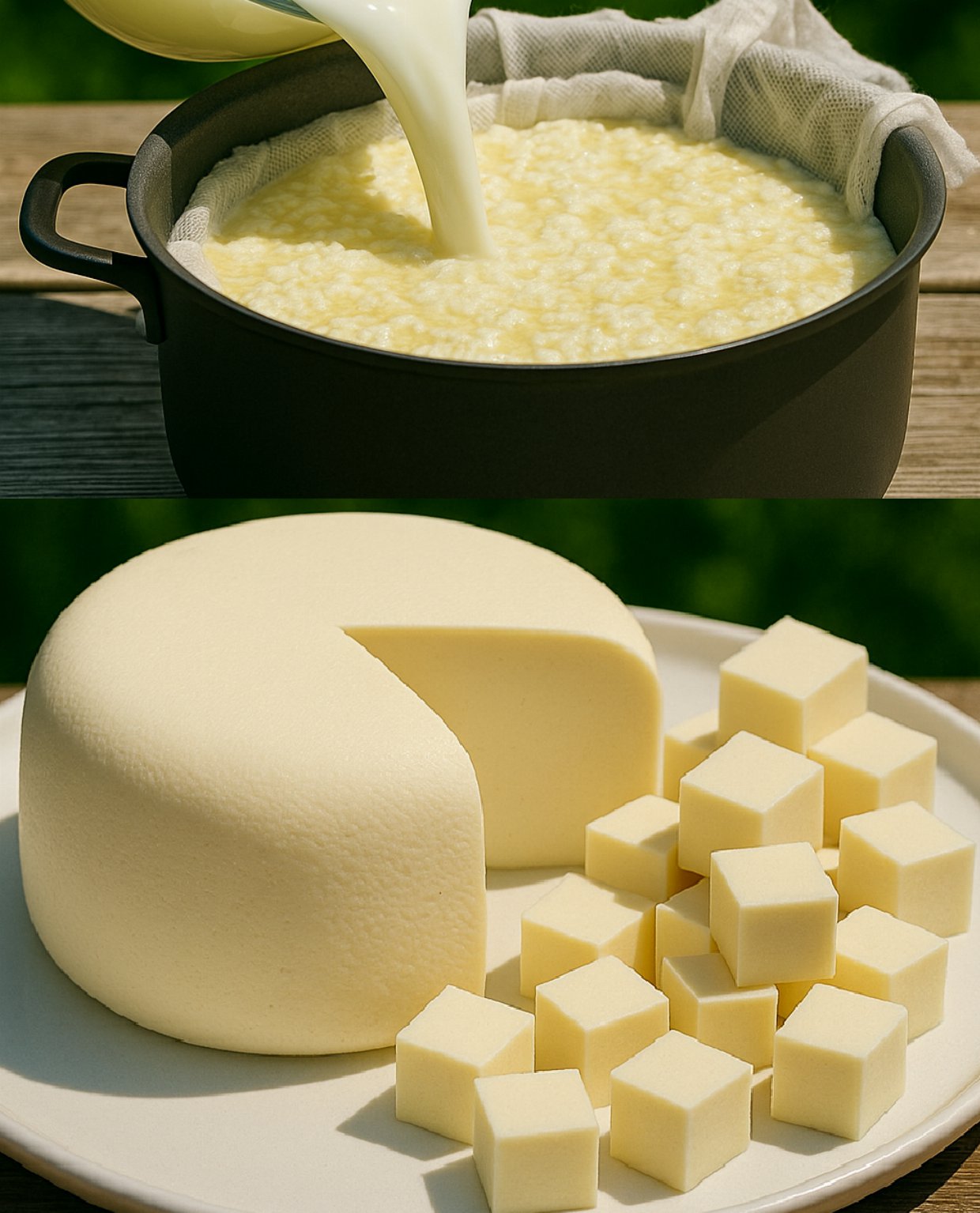It still amazes me how something as simple as milk and vinegar can come together to create cheese so rich, so buttery, so full of flavor, that it rivals anything I’ve ever picked up from a store. As a chef, there’s something deeply satisfying about stripping things down to the essentials—no fancy cultures, no special equipment, just real ingredients and honest flavor. The first time I made this, I honestly didn’t expect much. I thought, at best, I’d end up with something crumbly and bland. But what I tasted was warm, silky curds with just the right balance of tang and richness. I added herbs, a touch of salt, some melted butter—and suddenly, I was hooked. It was one of those moments that reminds you why you fell in love with cooking in the first place.

There’s a kind of magic in making cheese at home. You realize that with just a few ingredients—milk, vinegar, maybe a pinch of salt—you’re creating something from nothing. The curds form right before your eyes, almost like alchemy. It’s ready in under half an hour, which, let’s be honest, is quicker than a grocery run for cheese. And the best part? You get to make it your own. Want it herbaceous and fragrant? Add a mix of Provencal herbs. Craving something with a kick? A little chili flake does wonders. You get to be both the artisan and the taster, shaping the flavor to match your mood.
Of course, it starts with the milk. It’s got to be full fat, fresh, and not ultra-pasteurized—trust me on this. I’ve made the mistake of using skim before, and it just doesn’t curdle the same way. Pour it into a pot, gently heat it until it’s just starting to simmer—tiny bubbles around the edges, not a rolling boil. Then, slowly stir in the vinegar, and watch the transformation happen. Within seconds, soft white curds begin to separate from the golden whey, and just like that, you’ve made cheese.
Once it sits for a few minutes, you strain it through cheesecloth or a clean towel. Let it drain while you gather your flavorings—melted butter for richness, salt for balance, herbs for complexity. Mix everything gently, and already the texture becomes smooth and spreadable, like a cross between ricotta and cream cheese, only better, because it’s yours. Shape it however you want—a rustic ball, a neat round mold—and pop it in the fridge to chill and firm up. When it’s ready, you’ll want to put it on everything.
I’ve tried all sorts of variations, and every time it feels like a new experience. Sometimes I’ll mix in garlic and chili flakes for a fiery kick. Other times I’ll use lemon juice instead of vinegar and fold in chopped dill or thyme for a bright, citrusy bite. A little black pepper and chive makes a great savory version, and if I’m in the mood for something sweet, I’ll stir in crushed walnuts with a drizzle of honey. It’s a recipe that lets you play, lets you experiment. Just like when I’m baking milk buns or rolling sesame breadsticks, I find joy in that freedom.
And once it’s made, you’ll find yourself using it everywhere. Warm on toast in the morning, layered in wraps with grilled chicken for lunch, served with olives and crackers in the afternoon, crumbled over pasta at dinner. I’ve even stirred it into risottos and grain bowls—it just adds that creamy, homemade goodness that elevates a dish without overpowering it.
What really surprised me, though, was discovering the value of the leftover whey. I used to just pour it down the sink, not realizing that it’s packed with protein and flavor. Now I store it in the fridge and use it in bread dough—it gives rolls and flatbreads a subtle tang that’s addictive. I add it to soups and stews for depth, or blend it into smoothies for an extra protein kick. I’ve even used a splash in my dog’s food on occasion—after checking with the vet, of course.
Of course, I didn’t get it perfect the first time. My first batch was rubbery because I overheated the milk. Another time, I stirred too much after adding vinegar and ended up with tiny curds instead of big, fluffy ones. I’ve learned to simmer gently, stir just enough, and always taste before salting. Timing, temperature, and gentle hands make all the difference—lessons I’ve learned not just here, but in every delicate recipe I’ve ever attempted, from cheesecakes to sponge cakes.
Now, when I serve this cheese—maybe on crusty bread with a drizzle of olive oil, or chilled with roasted nuts and olives—people ask for the recipe. There’s something beautiful about sharing something that feels so personal, so handmade. And even if I’ve made it a dozen times, I still get that little thrill when I cut into it and taste it fresh.
Yes, you can swap vinegar for lemon juice if you like. And yes, it’s similar in texture to paneer or ricotta—soft, creamy, easily spread or crumbled. It keeps well in the fridge for about a week, but for the best flavor and texture, I like to use it within the first few days. You can freeze it, though it might get a little crumbly when thawed. Still, it’ll be delicious.
So the next time you have a little milk in the fridge and a few spare minutes, try making cheese. Not only will it make your kitchen smell incredible, but it’ll also remind you that some of the most satisfying things in life are the simplest. And maybe, like me, you’ll fall in love with cooking all over again.





